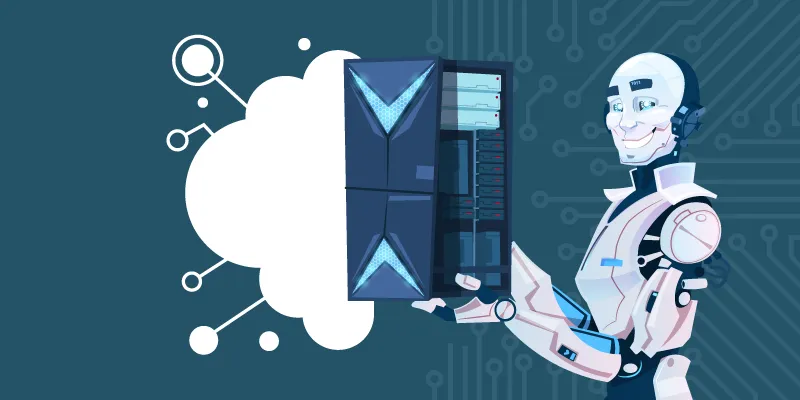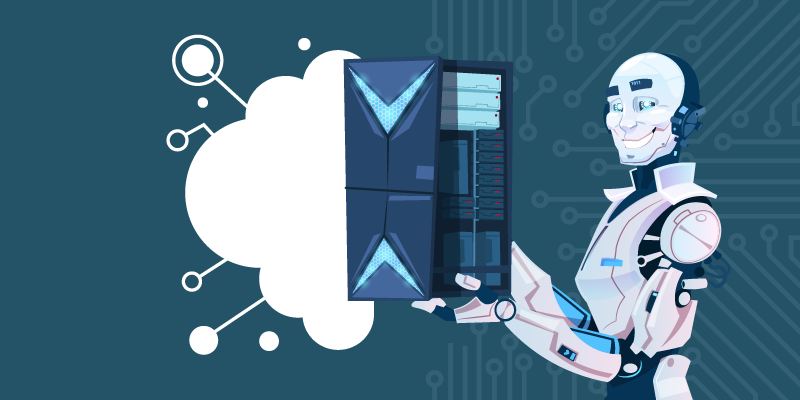Tracing the evolution of the cloud: from data dump to a prescriptive and predictive platform
The cloud is fast becoming the new normal. But it’s moved from being used by businesses worldwide for storage benefits to crunching data on a real-time basis.

Seven years ago when the cloud began to take centrestage, one segment was almost as happy as the developers. Startups.
Startups realised the importance of the cloud, albeit in a myopic way. They were happy to use the cloud because they could pay-as-you-go for data scaling and did not need to pay for infrastructure. This allowed them to scale up and raise money for what they were good at rather than spend invested money on technology infrastructure that was proprietary.
The public cloud has changed the way businesses scale up. In the Indian context, the rise of ZOHO and FreshWorks and how these software companies scaled up to launch applications for businesses in a matter of days showcases this.
However, with the evolution of technology, the cloud is no longer about paying for scaling up infrastructure and delivering easy-to-use applications. Its central - and most powerful theme - is about Machine Learning and Artificial Intelligence. These use massive amounts of data to prescribe and predict patterns on a real-time basis for prescriptive services.
(Read the rise of the virtual assistant story for more on the prescriptive nature of new businesses).
The cloud meets AI
No wonder Oracle is betting on the self-governing cloud, where you don’t need engineers to patch up infrastructure-related tickets. Google and Amazon have taken it a step ahead – they have said data is far beyond managing infrastructure and have invested in AI and Machine Learning for businesses that gather data from devices.
Andy Jassy, CEO of AWS, says, “We have launched DeepLens for this very purpose. Developers or builders can learn about the power of Machine Learning from data collected from hardware.”
Google offers something similar called “Clips”. The only difference is that AWS focuses on helping businesses build on top of DeepLens while Clips is focused on the consumer. Both have AI built into the system.
Clips, a wireless camera, puts AI behind the lens. Designed essentially for passive use, it helps capture moments people would miss with a dedicated camera or smartphone. It’s smart enough to recognise lighting, framing, expressions, and capture spontaneous images.
DeepLens, on the other hand, allows developers to understand the power of edge analytics, or of data about the user, maybe even their behaviour when used for security purposes.
Since the cloud is central to these companies, the power of computing massive amounts is the business model. The engineering jargon can be complicated, but for the sake of making it simple, the camera allows data to be structured, trained and self-learn.
The AI platform of AWS, Sagemaker, computes data, on a real-time basis, and comes up with searchable options on the go.
DeepLens and Clips are not yet out in the market. But the real-time jargon means nothing without customers revealing how the wielding the power of the cloud has helped them.
The power of the cloud
Matt Fryer, Head of Data Science at Expedia.com, says: “We use the cloud and data tools to crunch millions of images to get the right images out to our customers when they book a hotel.”
Similarly, Walter Scott, Founder and CTO of Digital Globe, says over the decade the argument has shifted from just using the cloud for storage benefits to crunching data on a real-time basis. No wonder fire fighters and governments use Digital Globe’s images to find out how to serve disaster-prone areas and evacuate people with data.
“There is no questioning the power of Artificial Intelligence and the impact of the cloud on connecting people on a real-time basis,” Scott says.
Companies like FreshWorks, Helpshift, and Wingify were born in the cloud and deliver services rapidly to customers with custom applications. They will also begin to use AI on their platforms now that they have collected massive amounts of customer data.
The market is growing
The worldwide infrastructure as a service (IaaS) public cloud market grew 31 percent in 2016 to total $22.1 billion, up from $16.8 billion in 2015, according to Gartner, Inc. Amazon was the No. 1 vendor in the IaaS market in 2016, with a 44.2 percent market share, followed by Microsoft and Alibaba.
Sid Nag, Research Director at Gartner, says: “The market for cloud services is growing faster than virtually every other IT market today, with much of this growth coming at the expense of the traditional, non-cloud offerings.”
“The demand for cloud-based IaaS continues on its path of aggressive growth, and the high growth of IaaS is also driving growth in related cloud markets. While platform as a service (PaaS) and software as a service (SaaS) are also exhibiting strong growth, IaaS is expected to show the fastest growth over the next five years,” he adds.
Within the IaaS market, there is a significant above-market growth for the big three hyperscale IaaS cloud providers. While Amazon Web Services dominated the market in 2016, Microsoft Azure gained more momentum, and Google made some gains.
Looking forward, Gartner believes that while competitive pressures increase, Amazon will witness growth erosion in share as the non-hyperscale providers struggle to provide value through their services. Other IaaS market leaders will, meanwhile, see an increase in growth.
Amazon has achieved this position by serving the most customers across the broadest range of use cases —cloud-native startups, midmarket businesses wanting to lift and shift traditional applications, and enterprises executing transformational migrations to the cloud.
When data meets cloud
Now, thanks to the convergence of data and the cloud, we can see a host of enterprises enter the era of consumerisation of IT, which means data is available to everyone on the go.
Think about it this way. A writer wants to source data from an enterprise about the incidence of poverty in major cities in India. Today, s/he searches on multiple sources and collates it. But soon, there will be services that will pull tables and data from the World Bank and the Indian Census, collate them and - in seconds - present it to the writer in the form of a visualisation.
The power of the cloud means multiple parties or enterprises should forge partnerships. This signals the birth of a new business model.
How are we going to forge ahead now? The cloud is going to be ubiquitous when we think about AI technology and data crunching in the future.











